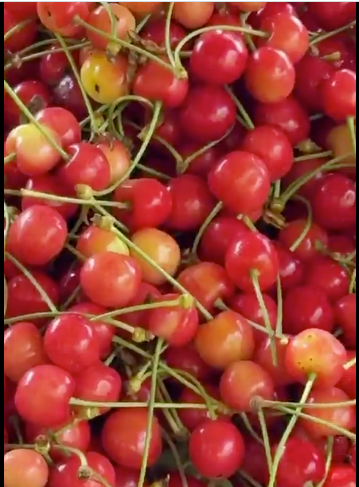Kashmir’s cherry orchards are abuzz with activity as the 2025 cherry harvest season kicks into high gear, bringing a vibrant seasonal energy to the valley. Farmers in regions like Ganderbal, Shopian, and Pulwama are reaping the rewards of favorable weather and advanced horticultural techniques, resulting in a bountiful yield of the valley’s prized cherries, the second fruit to ripen after winter. This year’s harvest, which began in early May, has sparked optimism among growers despite challenges faced by other crops in the region.
The cherry harvest has transformed local markets, with vibrant red and yellow cherries flooding stalls in Srinagar and beyond. Farmers like Ghulam Nabi from Ganderbal village report a promising season, attributing the success to newer cultivation methods, including better irrigation and pest management, promoted by the Sher-e-Kashmir University of Agricultural Sciences and Technology (SKUAST). “This year, the cherries are bigger and sweeter. We’ve been using modern sprays and pruning techniques, and it’s paying off,” Nabi said.
However, the season’s success is bittersweet. Unlike the region’s strawberry farmers, who faced plummeting prices due to reduced tourist demand following the April 22, 2025, terror attack in Pahalgam, cherry growers have so far benefited from steady local demand. The attack, which killed 26 tourists, led to a sharp decline in tourism, impacting crops like strawberries that rely heavily on visitors. Fortunately, cherries, a staple in local diets and less dependent on external markets, have maintained stable prices, offering relief to farmers.
The cherry harvest has also brought a cultural buzz to the valley, with families and communities coming together to pick and sort the fruit. In villages like Gussu, known for its strawberry fields but increasingly diversifying into cherries, the season is marked by festive gatherings and shared labor. “It’s not just about the fruit; it’s about our way of life. Everyone helps out, from kids to elders,” said Aiyaz Wani, a local farmer and photographer capturing the season’s vibrancy
Despite the positive outlook, challenges loom. A recent heatwave, with Srinagar recording its hottest day at 32.2°C and Qazigund hitting 33°C, has raised concerns about water availability for irrigation, especially after a dry winter with an 80% rainfall deficit. SKUAST experts are advising farmers to adopt water-efficient practices to sustain future harvests. Additionally, ongoing India-Pakistan tensions and the closure of 49 tourist spots following the Pahalgam attack could indirectly affect the agricultural economy if the situation escalates.
For now, the cherry harvest remains a bright spot in Kashmir’s agricultural calendar, with an estimated 2,000 metric tonnes expected this season across 200 hectares of orchards. The government is supporting growers through subsidies on fertilizers and market linkages to ensure the fruit reaches broader markets. As the valley basks in the glow of this fruitful season, the cherry harvest continues to symbolize resilience and hope for Kashmir’s farming communities.




